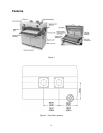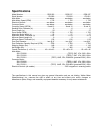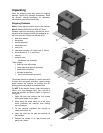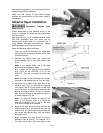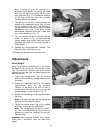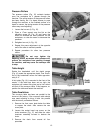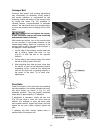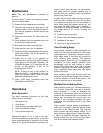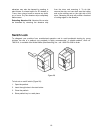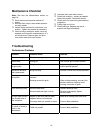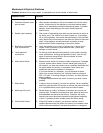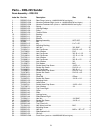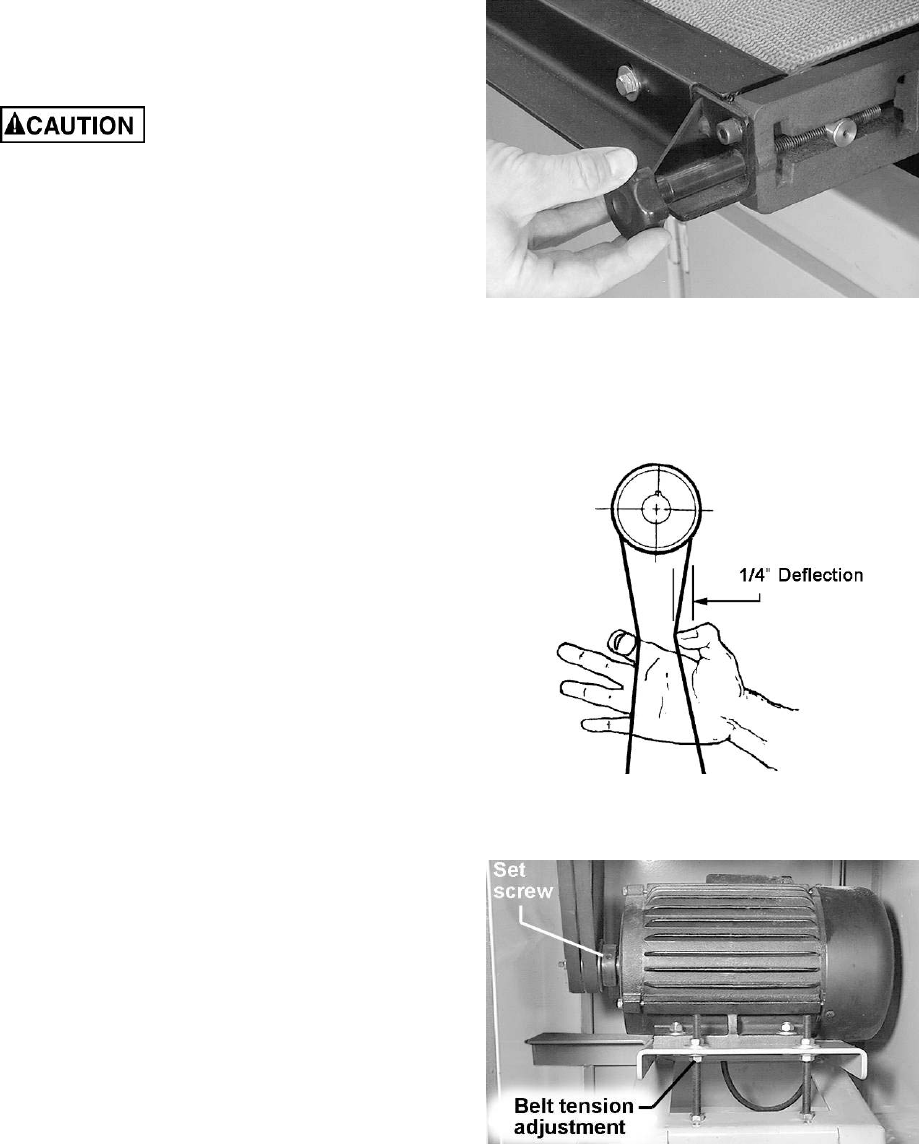
14
Conveyor Belt
Conveyor belt tension and tracking adjustments
may occasionally be necessary during break-in
and normal operation to compensate for belt
stretching. Adjust the tension of the conveyor belt
by turning the knobs (Fig. 20) clockwise to
increase tension, counterclockwise to decrease
tension. The belt should have just enough tension
to move the material without slipping on the drive
roller.
Do not over tighten the convey-
or belt. Excessive tension will cause stretching
and premature wear of the belt.
After tensioning the belt, turn on the machine and
run the conveyor in the forward direction at the
fastest speed setting. Watch for a tendency of the
conveyor belt to drift to one side of the conveyor. If
this happens, correct as follows:
1. On the side of the conveyor toward which the
belt is drifting, tighten the knob 1/4 turn
(Fig. 20) to shift the belt to the opposite
direction.
2. On the side of the conveyor away from which
the belt is drifting, loosen the knob.
3. After adjusting each take-up knob, allow time
for the belt to react to the adjustments before
proceeding further. Continue this adjustment
until the conveyor belt is tracking properly in
the center of the table. Try to avoid over-
adjustments.
Drive Belts
Check the tension of the drive belts by squeezing
the belts together in the middle (between the motor
and drum pulleys as shown in Fig. 21) with
moderate pressure. They are properly tensioned
when there is approximately 1/4” deflection.
If adjustment is necessary, loosen the hex nuts
(Fig. 22) and raise or lower the motor plate as
needed. (For example, to lower the motor plate
and increase tension, loosen the bottom nuts and
tighten the top nuts.) When finished, tighten the
nuts.
If replacing the belts, always replace them in
matched sets of the proper size.
Figure 20
Figure 21
Figure 22



